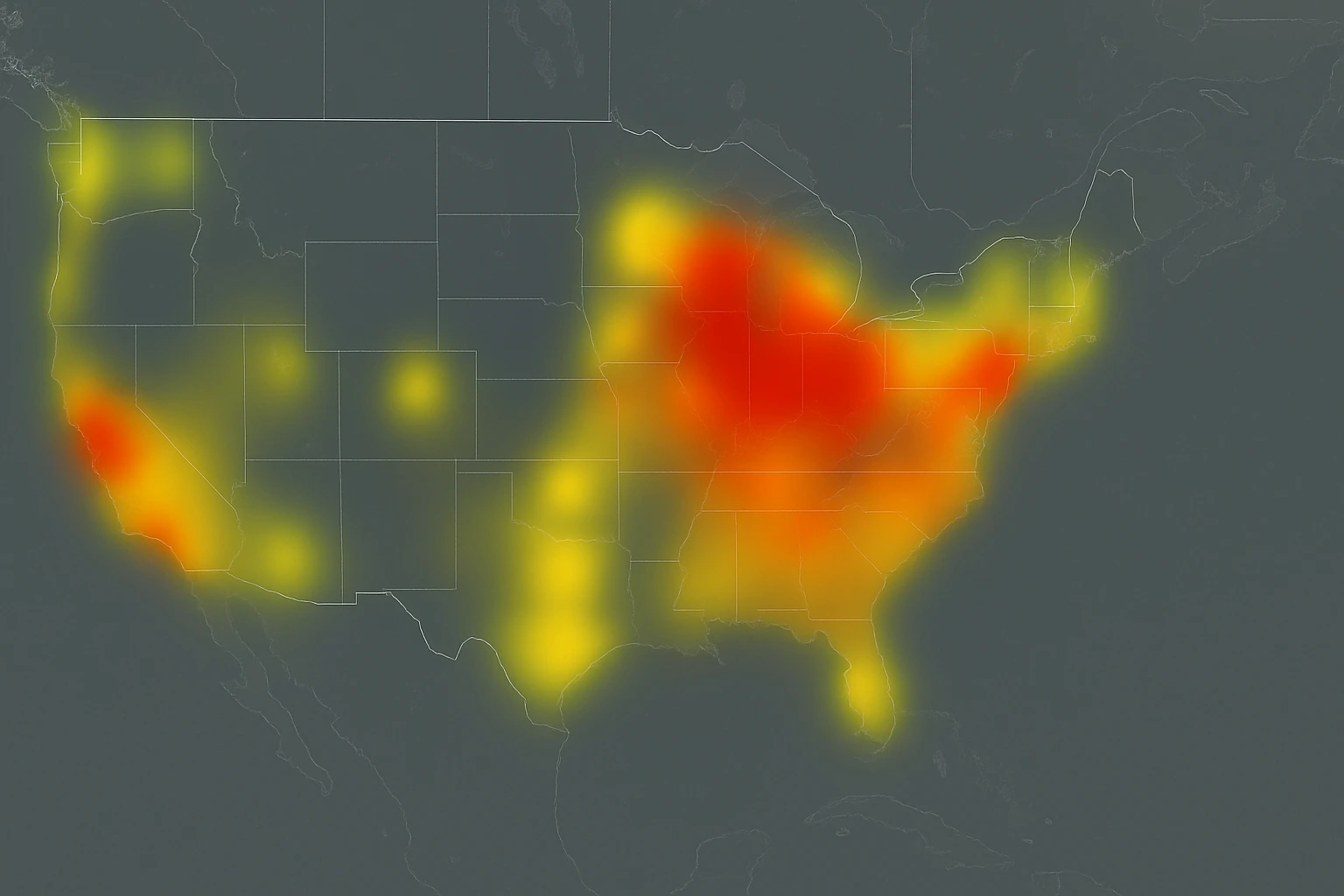NEW YORK — The PlayStation Network (PSN) experienced widespread outages across the United States on Tuesday, leaving thousands of users unable to log in, access multiplayer features, or launch digital games.
According to DownDetector, a website that tracks online service interruptions, the outage reports surged shortly after 6 pm Eastern Time, affecting players coast to coast.
Sony confirmed the issue on its official network service status page, stating that some services are experiencing issues, particularly affecting the “gaming and social” functions across PS5, PS4, PS3, PS Vita, and web platforms.
“You might have difficulty launching games, apps or network features,” the company said in a notice. “We’re working to resolve the issue as soon as possible. Thank you for your patience.”
The PlayStation Network down reports mark one of the more significant disruptions for Sony’s online gaming infrastructure this year.
The PSN, which supports millions of daily users globally, connects players to online multiplayer games, cloud saves, and digital purchases through the PlayStation Store.
Historically, large scale PSN outages have often coincided with high traffic events such as major game releases, software updates, or cybersecurity incidents.
While Sony has not yet provided a cause for the current disruption, many users reported issues similar to those seen during network overloads.
DownDetector’s heat map indicated the highest concentration of reports in New York, Los Angeles, Chicago, Dallas, and Atlanta, suggesting the problem is widespread but not limited to a single region.
Cybersecurity and gaming industry experts said that large-scale outages like this one can stem from multiple factors, including server overload, maintenance errors, or denial of service (DDoS) attacks.
Dr. Amanda Ruiz, a cybersecurity analyst at the Digital Systems Research Center in Washington, said the PlayStation Network down event highlights the challenges of maintaining large scale online platforms.
“Gaming networks operate at massive scales,” Ruiz said. “A small misconfiguration or an unexpected traffic spike can ripple into nationwide service disruptions, especially when millions are connected simultaneously.”
Independent gaming systems consultant Ethan Miller noted that Sony’s network has improved resilience since its infamous 2011 breach but remains vulnerable to high demand scenarios.
“PSN’s architecture today is far more secure and distributed than a decade ago,” Miller said. “However, redundancy systems can still be strained during major online events, particularly if maintenance overlaps with unexpected usage surges.”
According to DownDetector data, outage reports peaked at more than 25,000 within an hour of the first incident. Most users reported being unable to log in, access multiplayer games, or connect to PlayStation Plus services.
Comparatively, a similar PSN outage in April 2023 affected roughly 15,000 users and lasted just over two hours. At the time, Sony attributed the issue to “temporary network instability.”
The PlayStation Network down episode also coincides with an uptick in online gaming activity following recent releases of major titles such as Call of Duty Black Ops 6 and Spider Man 2. Analysts say such launches can cause sharp spikes in concurrent connections, occasionally stressing even well prepared networks.
Across social media, frustrated users shared their experiences with the outage. On X (formerly Twitter), “#PSNDown” trended nationwide within an hour of the disruption.
In Los Angeles, James Carter, a long time PlayStation player, said he was disconnected in the middle of an online session.
“I was halfway through a match when everything froze,” Carter said. “I thought it was my internet at first, but then my friends from New York had the same issue.”
In Chicago, Maria Lopez, a college student and casual gamer, said she could not launch any digital titles.
“Even offline games wouldn’t start because of the license check,” Lopez said. “It’s frustrating that so much of what we buy still depends on being connected.”
While many users expressed anger, others empathized with Sony’s technical challenges. “These systems are incredibly complex,” said Derek Thompson, a software engineer in Seattle. “The best they can do is communicate clearly and fix it fast.”
Sony has not announced an estimated recovery time for the ongoing PlayStation Network down issue, but the company’s last major outage of this scale was resolved within several hours.
Analysts expect the company to issue a detailed statement once the cause is confirmed. “Transparency will be important,” Ruiz said. “Users want to know whether this is maintenance related or something more serious like a cyberattack.”
Industry observers note that persistent disruptions can affect user trust and potentially impact subscription renewals for services such as PlayStation Plus and PlayStation Network Premium.
However, experts emphasize that occasional downtime is inevitable in large scale systems. “No network of this size operates with zero downtime,” Miller said. “What matters is how quickly and effectively the company responds.”
As of late Tuesday, the PlayStation Network remained partially offline across several regions in the United States, with Sony technicians working to restore full functionality.
While the cause of the outage has not been publicly identified, the company’s acknowledgment and response suggest active mitigation efforts are underway.
For millions of gamers relying on PSN for online play and entertainment, the disruption underscores the delicate balance between technological convenience and system vulnerability in the digital era.
Until services stabilize, users can expect intermittent connectivity while Sony works to bring the network fully back online.

